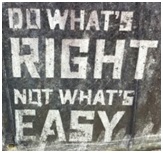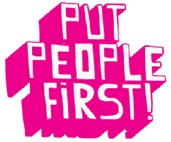|
 |
|
 |
|
|
||
The Salem Witch Trials - Learning and Ethics
The Salem Witch Trials (1692-3)
Famous for...
1. A witch-hunt Innocent people being convicted of witchcraft in and around Salem Village (now Danvers), Massachusetts, USA (then a British colony).
2. The Crucible Arthur Miller’s (pictured right) play, The Crucible, based on the trials. He likened them to the 1950’s anti-communist trials in America, led by Senator Joe McCarthy.
3. Puritans The Puritan church (strictly Protestant):
To escape persecution in England, the first Puritans (the Pilgrim Fathers) emigrated to Plymouth, Massachusetts, in 1620 in the Mayflower, pictured right.
Who were the bad guys? 1. Samuel Parris (pictured right) The Puritan minister in Salem Village.
2. Tituba (his South American slave) Parris forced her to say that witchcraft caused the “fits” of abnormal behaviour by:
This led to widespread hysteria and accusations of witchcraft against hundreds of people .
3. Ann Putnam One of the girls who (under pressure from her parents) led the witch-hunt.
4. Mary Warren A servant of John and Elizabeth Proctor, who falsely accused them of witchcraft.
Where and what happened? Trials were held in:
Over 150 people were arrested and imprisoned by the Puritan church.
Who were the heroes? The innocent victims, of whom 20 were executed including:
Rebecca Nurse (a saintly old lady).
John Proctor (a farmer).
George Burroughs (the only Puritan minister to be executed).
Giles Corey Corey:
Why was witchcraft such a big deal? Like many people in Europe, Puritans believed in witchcraft, because they thought it was the devil at work. This fear was increased by the constant fear of:
What happened after the trials? The Salem Village church (that led the attacks) gradually repented and in 1712 reversed the excommunications of
In 1706 Ann Putnam publicly asked for forgiveness.
Lessons for learning and ethics
1. Witch-hunts harm the innocent Innocent people were imprisoned and killed. Modern witch-hunts also destroy lives like Senator Joe McCarthy’s (pictured right) attack on American communists in the early 1950’s. This attack (called McCarthyism) inspired Arthur Miller to write The Crucible.
2. The truth must prevail Increase Mather (pictured right), a prominent Boston Puritan minister and the first head of Harvard University (then Harvard College), supported the trials. But he changed his views when rumours started about his wife being a witch!
3. Religion must be based on integrity and truth The Puritan church suffered because of:
4. Change or die The accusations of witchcraft were based on:
The myths of the past had to be forgotten, so that America could change and improve.
5. Stand up for your principles People were executed because they weren’t prepared to confess to witchcraft including the kind and well respected 71-year-old, Rebecca Nurse. John Proctor and his wife, Elizabeth, were falsely accused by their servant, Mary Warren. John was executed but Elizabeth’s pregnancy saved her.
6. Admit your mistakes and learn from them Despite his disgraceful behaviour, Samuel Parris didn’t apologize for his support of the witch-hunt until 1694. He was eventually forced to resign as Salem Village’s minister in 1697.
7. Put
people first People were being sacrificed out of spite, envy and hatred. Giles Corey and the Procters were charged because of their opposition to another church group led by the Putnam family. The Putnams also vindictively accused Rebecca Nurse because of long standing property disputes with her family.
Key quotes I have nobody to look to but God. - Rebecca Nurse.
It were better than one hundred witches should live than that one person be put to death for a witch, which is not a witch. - Thomas Maule (in his 1695 book which led to his imprisonment). |
|
|
||
|
|
||
| Copyright © wisdomtowin.com 2025 All Rights Reserved | ||
|










